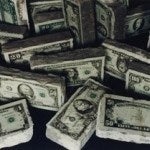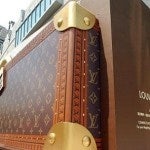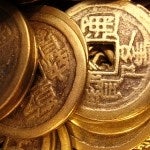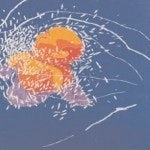Jing Daily’s Top Posts For The Week#
In case you missed them the first time around, here are some of Jing Daily’s top posts for the week of March 1-5:

The most recent ArtTactic Chinese Art Market Confidence survey (previously) indicated that buyer confidence had bounced back from its February 2009 low, with an overwhelming majority (70%) of mainland Chinese collectors projecting that the Chinese art market would recover within the next two years. Perhaps taking a cue from these findings — as well as inflation and signs that China will revalue the yuan some time this year — more art funds are incorporating Chinese artists into their investment mix.

Apple’s China Push: Why It’s Easier Said Than Done
Recently, Apple announced that the company plans to open 25 new stores in mainland China over the next two years, as it focuses on building its minuscule market share in one of the world’s most important tech markets. Although computer sales doubled between Q1 2009 and Q1 2010 and 200,000 iPhones have been sold in China since last October according to a Forbes article, Apple enjoys neither the widespread popularity nor market presence of global competitors like Dell or Toshiba or domestic competitors like Lenovo or Founder in China.
While much of this boils down to the fact that Apple has only one official retail location in China at the moment (in Beijing), there are other important reasons why wide-eyed optimism over Apple’s prospects in China are somewhat premature.

Mainland Chinese Shoppers Changing Hong Kong Retail Landscape
Chinese tourists taking cross-border shopping trips is far from unique to Korea, however, and two of the biggest beneficiaries of the outbound shopping boom have been some of the mainland’s closest neighbors — the Chinese special administrative regions of Macau and Hong Kong.
Macau, which is known more for its casinos than its malls, is relatively new to the Chinese shopping-tourist itinerary, but over the past few years the city has seen a surprising amount of construction, both of independent luxury boutiques and malls — all of which are built with mainland tourists in mind. Hong Kong, however, has been something of a playground for the mainland’s wealthy elite for quite some time, as the city’s cosmopolitan luxury infrastructure was well in place by the time China’s economy began its dramatic growth in the early 1990s. Over the past 20 years, the trickle of wealthy mainlanders escaping high import taxes by hopping across the border for duty-free shopping sprees in Hong Kong has become a deluge — much to the enjoyment of Hong Kong retailers and luxury brands from around the world.

McKinsey Director: 75% Of New Wealthy Households Will Be Outside Top Tier Cities
This week, many of the findings reported in both the Western and Chinese press about Chinese luxury consumer behavior and trends are validated in an interesting interview of Vinay Dixit, Senior Director of Asia Consumer Centers in McKinsey & Company, by Joel Backaler of The China Observer.
Joel Backaler:
The 2009 McKinsey Consumer survey emphasized that companies should no longer assume the existence of a homogenous “China market” and monolithic block of 1.3 billion consumers, adopting a one-size-fits-all China strategy. The survey introduces the “cluster map” approach to China market strategy. How will this alter the business models of foreign luxury companies trying to gain a foothold in China beyond tier-1 cities?

Is Investing In Art Equal To Saving For the Future?
The Chinese arts portal Artron (雅昌) has posted an interesting article(Chinese) that discusses the idea of art investment in China, and includes a list of “three key concepts” to keep in mind when thinking of buying art to increase the probability of good return-on-investment.
The full article (translation by Jing Daily team):
“Investing in art is like saving for the future” — this was the main theme of the Shanghai Art Fair. Presumably, the reason they’d give the fair such a theme is to attract more people’s attention to art and the idea of investing in it. Actually, most people who collect art nowadays do it mostly for investment reasons — the ones who do it out of a deep love for art are pretty rare.